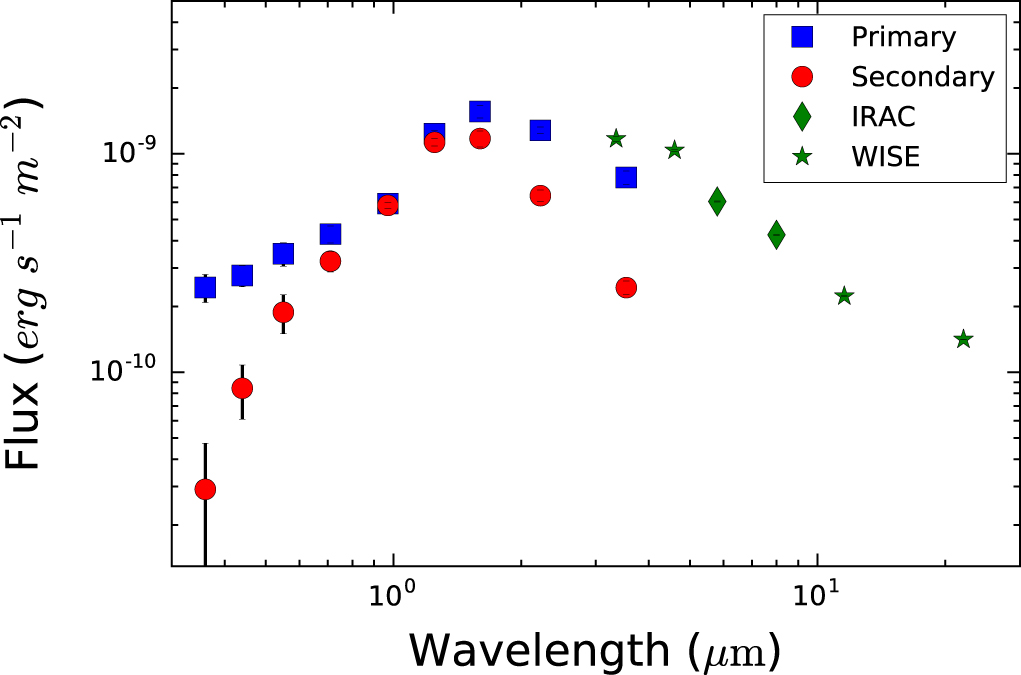
Properties of the Closest Young Binaries. I. DF Tau’s Unequal Circumstellar Disk Evolution
Abstract
We present high-resolution, spatially resolved, near-infrared spectroscopy and imaging of the two components of DF Tau, a young, low-mass, visual binary in the Taurus star-forming region. With these data, we provide a more precise orbital solution for the system, determine component spectral types, radial velocity, veiling and v i values, and construct individual spectral energy distributions. We estimate the masses of both stars to be ∼ 0.6 M . We find markedly different circumstellar properties for DF Tau A and B: evidence for a disk, such as near-infrared excess and accretion signatures, is clearly present for the primary, while it is absent for the secondary. Additionally, the v i and rotation period measurements show that the secondary is rotating significantly more rapidly than the primary. We interpret these results in the framework of disk-locking and argue that DF Tau A is an example of disk-modulated rotation in a young system. The DF Tau system raises fundamental questions about our assumptions of universal disk formation and evolution.